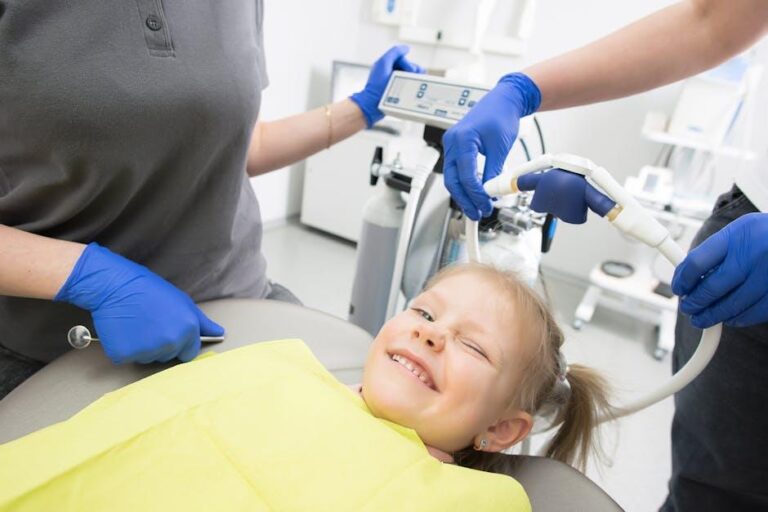1 in 3 Kids Has Dental Problems, Poll Finds – U.S. News & World Report
According to a recent poll featured by U.S. News & World Report, dental issues affect approximately one in three children in the United States. This concerning statistic sheds light on the widespread oral health challenges faced by our youth — challenges that can have long-term impacts if not addressed early. In this comprehensive article, we explore the causes and consequences of these dental problems, provide useful prevention tips, and highlight expert insights to ensure your child maintains a healthy smile.
Why Are Dental Problems Common in Children?
Dental problems in children are often the result of a mix of lifestyle factors, diet, oral hygiene practices, and access to proper dental care. Here are some of the primary reasons why so many kids struggle with oral health:
- Poor Oral Hygiene: Inadequate brushing and flossing can lead to plaque buildup, cavities, and gum disease.
- High Sugar Consumption: Frequent intake of sugary snacks and beverages fuels bacteria that cause tooth decay.
- Limited Access to Dental Care: Many families face economic or geographic barriers that prevent regular dental visits.
- Lack of Parental Awareness: Some parents may lack knowledge about proper pediatric dental care.
- Genetic Predispositions: Some kids have inherited vulnerabilities impacting enamel strength or tooth alignment.
Key Dental Problems Affecting Children
| Dental Issue | Description | Common Symptoms |
|---|---|---|
| Tooth Decay (Cavities) | Damage to tooth enamel caused by acid-producing bacteria. | Tooth pain, sensitivity, visible holes or discoloration. |
| Gingivitis | Inflammation of the gums due to plaque buildup. | Red, swollen, or bleeding gums. |
| Tooth Sensitivity | Enamel erosion leading to discomfort from hot, cold, or sweet stimuli. | Sharp pain when consuming certain foods or drinks. |
| Malocclusion | Misalignment of teeth resulting in bite issues. | Difficulty chewing, speech problems, aesthetic concerns. |
The Impact of Untreated Dental Problems on Kids
Untreated dental issues can have far-reaching consequences beyond mere tooth pain. Some significant impacts include:
- Difficulty Eating and Speaking: Pain and discomfort can affect nutrition and communication.
- Lowered Self-Esteem: Children may feel self-conscious about visible dental problems or bad breath.
- Missed School Days: Dental pain and treatment appointments cause educational disruption.
- Chronic Health Risks: Oral infections can spread and contribute to systemic health issues.
Practical Tips to Prevent Dental Problems in Children
Good news: many dental problems are preventable with consistent care and proactive measures. Here are expert-recommended tips for parents and caregivers:
- Establish a Daily Oral Hygiene Routine: Encourage brushing twice daily with fluoride toothpaste and flossing once per day.
- Limit Sugary Foods and Drinks: Replace soda, candy, and juice with water, fruits, and healthy snacks.
- Schedule Regular Dental Checkups: Visit the dentist every six months or as recommended.
- Encourage a Balanced Diet: Foods rich in calcium and vitamins support strong teeth and gums.
- Use Protective Gear: For active kids, mouthguards help prevent sports-related dental injuries.
- Educate About Oral Health: Teach children the importance of taking care of their teeth for lifelong benefits.
Case Study: A Family’s Journey to Better Dental Health
The Smith family from Ohio shared their experience after their 7-year-old daughter, Emma, was diagnosed with multiple cavities during a routine dental visit. Prior to the diagnosis, Emma had frequent complaints of tooth pain, but regular brushing was inconsistent, and sugary snacks were common.
After learning about the severity of the issue, the family implemented the following changes:
- Strictly monitored brushing time using a timer and fun apps designed for kids.
- Replaced soda and juice with water and milk.
- Made dental appointments a family priority.
- Encouraged Emma to choose tooth-friendly snacks like cheese and apples.
Within six months, Emma’s oral health improved significantly, and her dental pain disappeared. The Smiths now serve as advocates for pediatric dental care in their community.
First-Hand Experience: Pediatric Dentist’s Advice
Dr. Angela Rivera, a pediatric dentist practicing in Chicago, emphasizes the importance of early intervention:
“Parents often underestimate how critical early dental care is. Dental issues often start quietly and progress rapidly. Consistent hygiene habits and regular professional checkups are the best defense. Also, don’t hesitate to ask your dentist if your child needs fluoride treatments or sealants—these can drastically reduce cavity risks.”
Summary Table: The Do’s and Don’ts of Kids’ Dental Care
| Do’s | Don’ts |
|---|---|
| Brush twice daily with fluoride toothpaste | Allow frequent snacking on sugary treats |
| Visit a dentist every 6 months | Ignore early signs of tooth pain or sensitivity |
| Encourage flossing daily | Share eating utensils or clean pacifiers with mouth saliva |
| Encourage healthy snacks and drinks | Allow excessive consumption of sodas and juices |
Conclusion: Protecting Our Children’s Smiles Starts Today
The finding that 1 in 3 kids in the U.S. suffers from dental problems is a call to action for parents, caregivers, and health professionals alike. Oral health is a vital component of overall wellbeing and can shape a child’s confidence, nutrition, and future health status. By implementing practical oral care habits, prioritizing regular dental visits, and making informed nutritional choices, we can turn the tide on pediatric dental issues.
If you want your child to enjoy a healthy smile for life, start today with good habits and the guidance of dental health experts. Remember: prevention is always better — and often less costly — than treatment.
For more information on pediatric dental care, visit the American Dental Association’s Children’s Oral Health page.


